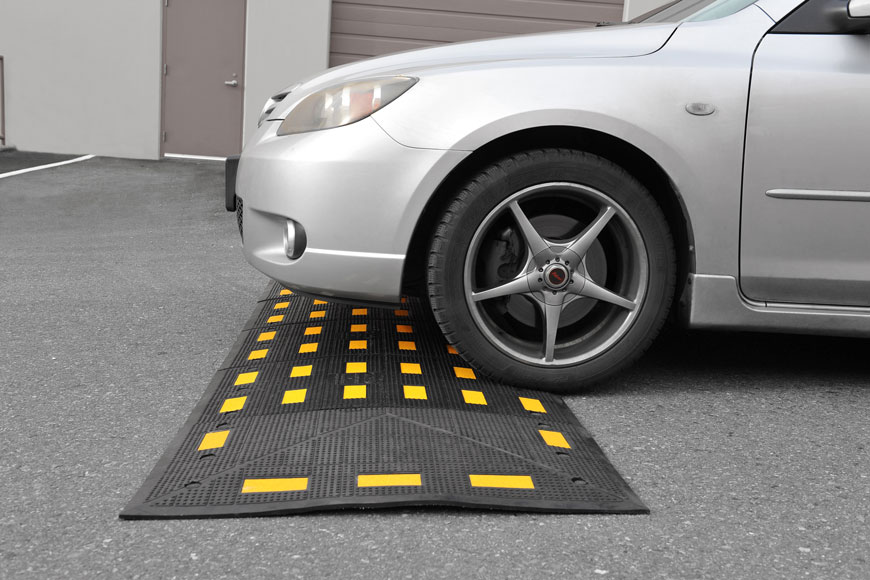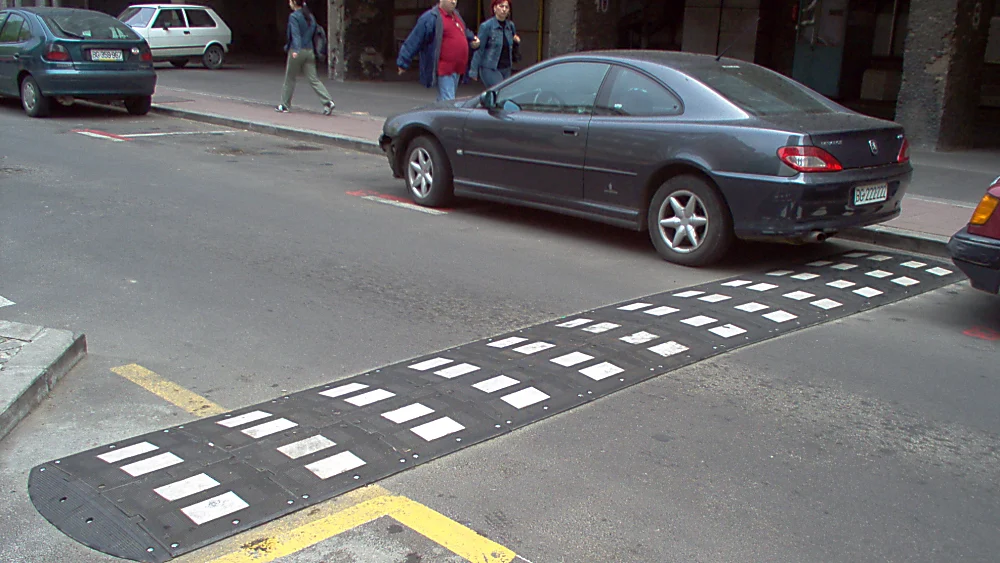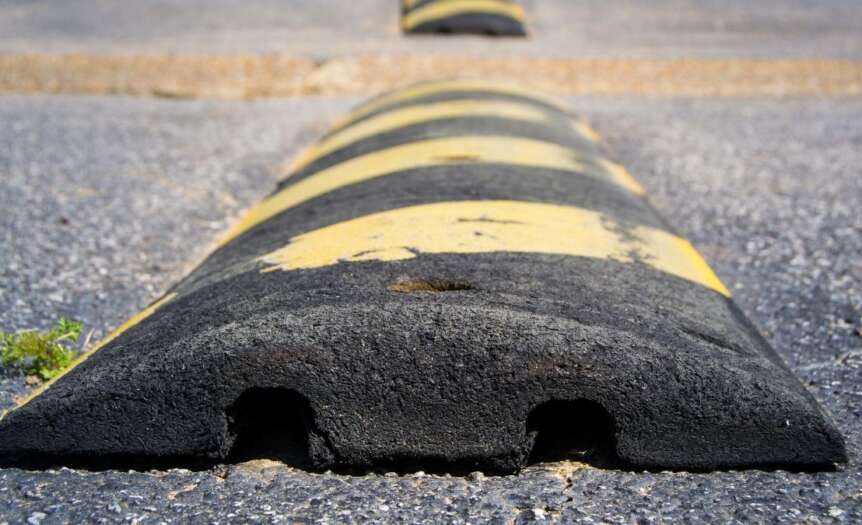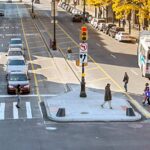As cities strive to create safer and more walkable neighborhoods, one traffic-calming feature stands out for its effectiveness and simplicity: the speed bump. These raised sections of pavement are widely used around the world to slow down vehicles, especially in residential areas, near schools, hospitals, and pedestrian zones.
But speed bumps are more than just obstacles—they are powerful tools in reducing speeding, preventing accidents, and protecting communities.
🛑 What Are Speed Bumps?
Speed bumps are raised, rounded mounds installed across roads to reduce vehicle speed. They force drivers to slow down to avoid discomfort or potential damage to their vehicles. Speed bumps are typically 3 to 4 inches high and 1 to 3 feet wide, creating a jolt if taken too fast.
They are part of a broader set of traffic-calming measures used by municipalities and urban planners to enhance road safety.
🎯 Purpose of Speed Bumps

The main objectives of installing speed bumps include:
- Reducing vehicle speeds in high-risk zones
- Improving safety for pedestrians and cyclists
- Minimizing traffic in sensitive areas like schools and residential streets
- Discouraging cut-through traffic in neighborhoods
🏙️ Where Are Speed Bumps Commonly Used?
Speed bumps are strategically placed in areas where speeding poses a risk, such as:
- School zones
- Residential streets
- Hospital entrances
- Parking lots
- Gated communities
- Private roads
- Parks and recreational areas
They are often accompanied by signage, road markings, and sometimes reflective paint or lighting for visibility at night.
⚙️ Types of Speed Bumps and Similar Features
There are several types of vertical deflection devices used to calm traffic:
1. Speed Bumps
- Short and high
- Used in low-speed areas like parking lots or private roads
- Designed to slow vehicles to 5–10 mph
2. Speed Humps
- Longer and flatter than bumps
- Common in residential neighborhoods
- Encourage speeds of 15–20 mph
3. Speed Tables
- Even longer and often used on busier roads
- Provide a more gradual rise
- Can include crosswalks
4. Raised Crosswalks
- Combine speed reduction with pedestrian safety
- Encourage drivers to stop and yield
✅ Benefits of Speed Bumps
🛡️ Increased Safety

Speed bumps reduce the likelihood of accidents by slowing cars down in critical areas, making roads safer for children, pedestrians, and cyclists.
🌿 Environmental Benefits
Slower traffic means less noise pollution, reduced fuel consumption, and fewer emissions in residential areas.
🚷 Discouragement of Cut-Through Traffic
Drivers looking for shortcuts are less likely to use streets with speed bumps, keeping local roads calmer.
🚶 Pedestrian Protection
Slower cars give pedestrians more time to cross streets safely, especially in school zones or near parks.
⚠️ Considerations and Drawbacks
While speed bumps are effective, there are some considerations:
- Emergency response delay: Speed bumps can slow down fire trucks and ambulances
- Increased wear and tear on vehicles if not navigated properly
- Noise from vehicles slowing and accelerating again
- Potential for discomfort for drivers and passengers if not well-designed
For these reasons, cities often conduct traffic studies before installing them and may opt for speed humps or tables as alternatives.
🚗 Best Practices for Speed Bump Design and Placement
- Install warning signs at least 100–200 feet ahead
- Use reflective paint for nighttime visibility
- Place them at appropriate intervals (every 300–500 feet)
- Combine with pedestrian signage or crossings for dual functionality
- Ensure accessibility for emergency vehicles with optimized spacing or alternative routes
🌍 Examples of Speed Bump Use Around the World
🇺🇸 United States
Speed bumps are commonly found in school zones and parking areas, regulated by local traffic authorities.
🇬🇧 United Kingdom
Often used as part of a broader 20 mph zone traffic-calming scheme in urban neighborhoods.
🇮🇳 India
Speed breakers (as they’re commonly called) are widely used on city roads, often without standardization—leading to mixed results in safety.
🇳🇱 Netherlands
Used extensively in residential areas with pedestrian-priority streets, integrated into urban design for maximum safety.
🔄 Speed Bumps in Sustainable Urban Design
As more cities embrace walkability, livability, and sustainable mobility, speed bumps play a key role in reducing car dominance and enhancing the street experience for non-motorized users. They are cost-effective, easy to install, and yield immediate results.
FAQ’s
1. What is the purpose of speed bumps?
Speed bumps are designed to reduce vehicle speeds in specific areas such as residential neighborhoods, school zones, and parking lots. They promote safer driving and help prevent accidents involving pedestrians and cyclists.
2. How do speed bumps differ from speed humps and speed tables?
Speed bumps are shorter and more abrupt, forcing drivers to slow to 5–10 mph. Speed humps are wider and gentler, allowing for speeds of 15–20 mph. Speed tables are longer, often flat-topped, and can double as crosswalks in high-traffic areas.
3. Are speed bumps safe for emergency vehicles?
While speed bumps can slightly delay emergency response times, cities often plan around this by installing speed humps or tables on primary emergency routes or providing alternate paths.
4. Do speed bumps damage cars?
Speed bumps are safe for vehicles when driven over at the recommended speed. However, hitting them at high speeds can cause wear and tear or discomfort, especially in low-clearance vehicles.
5. Where should speed bumps be installed?
Speed bumps are best used in low-speed, high-pedestrian zones such as:
- School areas
- Residential neighborhoods
- Parks
- Hospital driveways
- Private and commercial parking lots
6. Can speed bumps reduce noise and air pollution?
Yes—by reducing vehicle speeds and discouraging aggressive driving, speed bumps can help minimize noise levels and lower emissions in residential areas, contributing to a more livable environment.
7. Are there regulations or standards for speed bump installation?
Most municipalities follow specific guidelines for speed bump dimensions, placement, and signage to ensure consistency, safety, and effectiveness. It’s important to follow local regulations before installation.
8. Do speed bumps actually reduce accidents?
Yes. Multiple studies show that speed bumps can significantly reduce traffic speeds and lower the number and severity of crashes, especially in school zones and densely populated residential areas.
Conclusion: Small Bump, Big Impact
Speed bumps might seem like a minor addition to a road, but their impact is significant. They serve as a critical component in creating safer, more peaceful streets where pedestrians, cyclists, and drivers can coexist. By slowing down traffic, they literally give people more time—more time to react, to cross safely, and to enjoy their communities. If you’re part of a neighborhood or city looking to calm traffic, speed bumps may be the simple yet powerful solution you need.



















